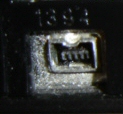Guide to Buying a DVDRW Drive
Topics covered include: DVDRW Formats, DVDRW Speed Ratings, Internal versus External DVDRW Drives.DVDRW Formats
DVD-RW, DVD+RW, DVD-RAM, DVD±RW, and Dual Layer DVDsHere is a quick guide to the formats:
- DVD-R and DVD+R use write-once disks, whereas DVD-RW and DVD+RW disks are rewritable.
- DVD-R and DVD+R disks (the non-rewritable disks) are more frequently playable on home dvd players. Recent studies by Philips and Intellikey showed that DVD-R and DVD+R disks had greater than 75% compatibilty in home dvd players, wheras DVD+RW and DVD-RW worked in home dvd players only 60-75% of the time. Other studies have shown 80% or more success in using any of the formats. However, the compatibility may be worse for older dvd players.
- Capacities of single-sided DVD media (writable and rewritable) are 4.7 GB (roughly six time the capacity of a CD-R disk). Dual-Layer disks, which have two recording layers on one side of the disk, can hold approximately 8 GB (double sided, dual layer disk will then hold up to 16 GB).
- The 4.7 GB capacity of single-layer, single sided dvd media translates to approximately 2 hours of high-quality video, and dual layer disks will hold about 4 hours on one side (without having to flip the disk over during playback).
- Dual layer DVD+R (DVD+R DL) disks work with most home dvd players, and the drives are backward compatible with single-layer disks too. However, in order to record DVD+R DL disks, you will need a dvd burner that is capable of writing to them.
- Write speeds to double-layer disks are slower than single-layer media.
- Most DVD-R/RW and DVD+R/RW drives can create audio disks compatible with any cd player (using CD-R/RW media).
- DVD-RAM media come housed in a cartridge (most disks can be removed from the cartridge), are re-recordable, and the disks cannot be played in an audio cd or home dvd movie players. They also have slower data transfer rates.
What we recommend:
- First, choose a player that supports multiple formats. For example Sony's DRU- and DRX- models can record disks in any of these formats: DVD-R/RW, DVD+R/RW, and CD-R/RW. Multi-format, dual-layer writers have come down in price dramatically, so you won't have to trade off features and performance for price anymore. For example, Sony's DRU-710A double layer, multi-format drive costs only about $100 (after mail-in rebates).
- Second, if you want the highest compatibility between your disks and home dvd movie players, record to DVD-R, DVD+R, or dual-layer DVD+R media rather than rewritable disks.
DVDRW Speeds
8X, 16X, 32X, etc.DVD drive speed conventions are similar to those used to describe CD-RWs. For example, our Sony DRU-710A is 8X/4X/16X. This means it can write at 8X speed (on DVD-R media), rewrite at 4X speed, and read a DVD at 16X. These "X" numbers are all a multiple of the original standard (1.4 MB per second). So, for example, it is capable of reading 16 times faster than the standard (or over 20 MB per second).
At 1X speed, the time to burn one 4.7 GB DVD is just under one hour. For comparison, a 1X CD burn (650 MB) would take about 80 minutes. Thus, DVD write speeds are much faster. A 4X speed writer is capable of the same write (4.7 GB) in just under 15 minutes, whereas an 8X burner would finish in under 9 minutes.
The speed ratings for DV drive a little more complicated than CD writers because of the larger number of DVD media types. For example, the write speed to double-layer DVD+R media is only 2.4X, but for DVD+R single-layer disks it is 16X.
What we recommend:
With the cost of DVD drives falling, consumer no longer have to trade off performace for price. Most manufacturers are no longer producing the slower drives anyways. In order to achieve the optimal write speed, however, users need to select slightly more costly DVDRW disks capable of the faster writes.
DVDRW Internal Versus External Drives
USB 2.0, Firewire, ATA/IDEChoosing between an internal or external drive is largely a matter of preference, cost, and utility. Internal drives are cheaper, but it takes about an hour to install. While installation is not difficult (see our pictorial how-to dvdrw installation guide), it can be a daunting task for novices. External drives, on the other hand, while pricier, allow for portability, and they are easy to setup (plug and play).
External drives come with either of two connections: USB or FireWire. The main difference is that FireWire is quicker than USB.
See our photos below to determine which interface your system supports.

USB Ports |

FireWire Port (four pin) Also known as IEEE 1394 or iLink) There are also 6-pin FireWire interfaces FireWire allows faster data transfer speeds than USB. |
What we recommend:
To save money, select an internal drive. If portability and easy setup is important then select and external FireWire or USB 2.0 drive.
Copyright 2005 anewShop.com

|
|
- DVD Burner Guide - Installing a DVD Burner - How to copy dvd movies - Portable DVD Players
|